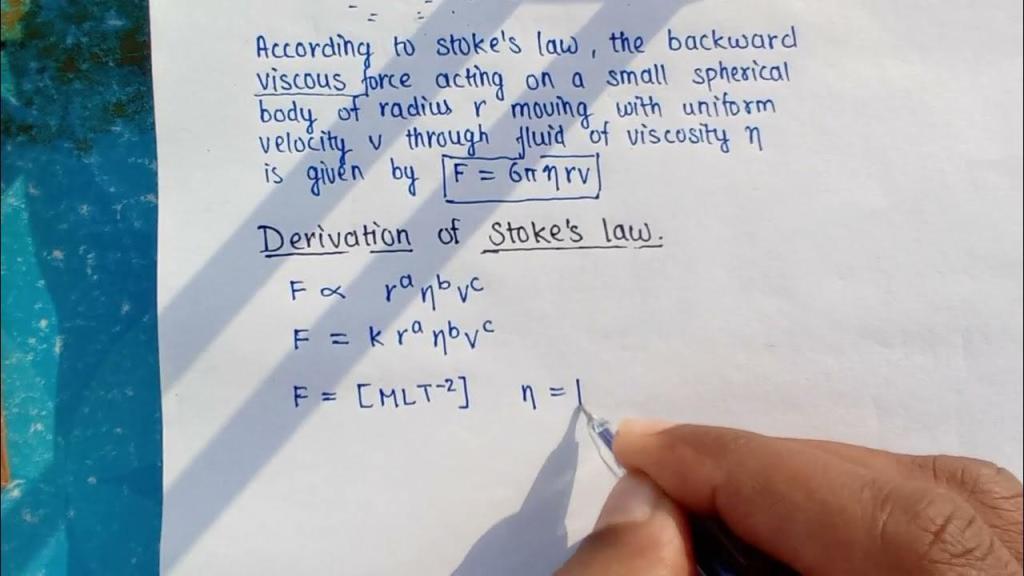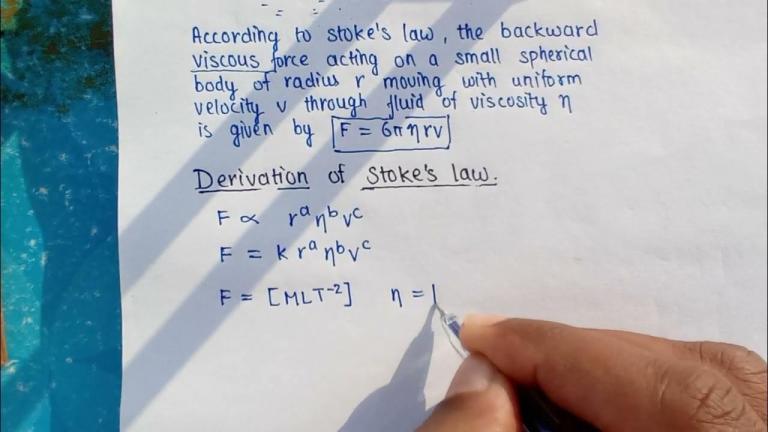
In the realm of fluid dynamics, the Stokes Law stands as a fundamental pillar, offering insights into the behavior of particles immersed in a viscous medium. Beyond its individual significance, this equation reveals intriguing connections and shared principles with other phenomena, enriching our understanding of the intricate dance that governs the physical world.
A Glimpse into the Stokes Law Equation
The Stokes Law Equation, a cornerstone of fluid dynamics, elegantly captures the dynamics of spherical particles within a viscous fluid medium. It elucidates the drag force experienced by these particles as they move through the fluid under the influence of external forces, such as gravity. Mathematically, the equation establishes a linear relationship between the drag force, the particle’s velocity, and the fluid’s viscosity.
Shared Principles and Phenomena of Stokes Law Equation
While the Stokes Law Equation is singular in its focus, it shares underlying principles and concepts with a tapestry of related phenomena, casting a spotlight on the interconnectedness of the physical world.
The concept of terminal velocity in free fall mirrors the core tenets of the Stokes Law Equation. Just as the equation describes the point at which the drag force balances out the gravitational force, terminal velocity marks the point at which an object falls at a constant speed due to the equilibrium between gravity and air resistance. Both phenomena hinge on the delicate interplay between opposing forces.
Stokes Law Equation Sedimentation Dynamics
In the realm of sedimentation dynamics, akin to the behavior of particles in a fluid medium, the principles set forth by the Stokes Law Equation find resonance. As particles settle through a liquid or gas, their velocity ultimately stabilizes as the drag force counterbalances gravitational forces. This parallel underscore the universality of equilibrium principles governing particle dynamics.
Stokes Law Equation Hydrodynamic Interaction
Hydrodynamic interaction, a captivating interplay between particles immersed in a fluid, draws parallels to the Stokes Law Equation. While the equation’s scope is confined to isolated particles, the principles it embodies – the influence of velocity and viscosity on dynamic behavior – reverberate in the intricate choreography of particles within a fluidic ensemble.
Stokes Law Equation Electrophoresis and Mobility
Delving into the realm of particle electrophoresis reveals intriguing similarities with the Stokes Law Equation. Just as the equation unveils the influence of viscosity on the velocity of particles, electrophoresis illuminates how a particle’s mobility in an electric field is modulated by its size, charge, and the surrounding medium. These phenomena, seemingly disparate, share a common thread in their exploration of particle motion.
Stokes Law Equation Embracing Unity in Diversity
As disparate as these phenomena may appear, they harmoniously converge through shared principles and mathematical underpinnings. The Stokes Law Equation, with its focus on drag forces and particle behavior, serves as a unifying beacon that guides our understanding of diverse physical processes. Its elegance lies not only in its predictive power but also in its ability to unveil the subtle symphony that underlies the dynamics of particles in fluidic environments.
Beyond Stokes Law Equation
While the Stokes Law Equation provides a foundational framework, its resonance extends far beyond the realm of mathematical expressions. It beckons us to explore, question, and unearth the hidden connections that interlace seemingly distinct phenomena. In this journey of discovery, we transcend the boundaries of individual equations, embracing a symphony of interrelated concepts that enrich our comprehension of the world.
Conclusion
The elegance of the Stokes Law Equation lies not only in its ability to elucidate particle dynamics within a fluid but also in its role as a nexus that binds together a diverse array of phenomena. From terminal velocity to hydrodynamic interactions, from sedimentation dynamics to electrophoresis, these seemingly disparate concepts converge through shared principles, unveiling a tapestry of interconnectedness that enriches our exploration of the physical universe. As we continue our voyage of discovery, guided by the harmonious dance of equations and principles, we find ourselves on a path of ever-deepening understanding and awe.






